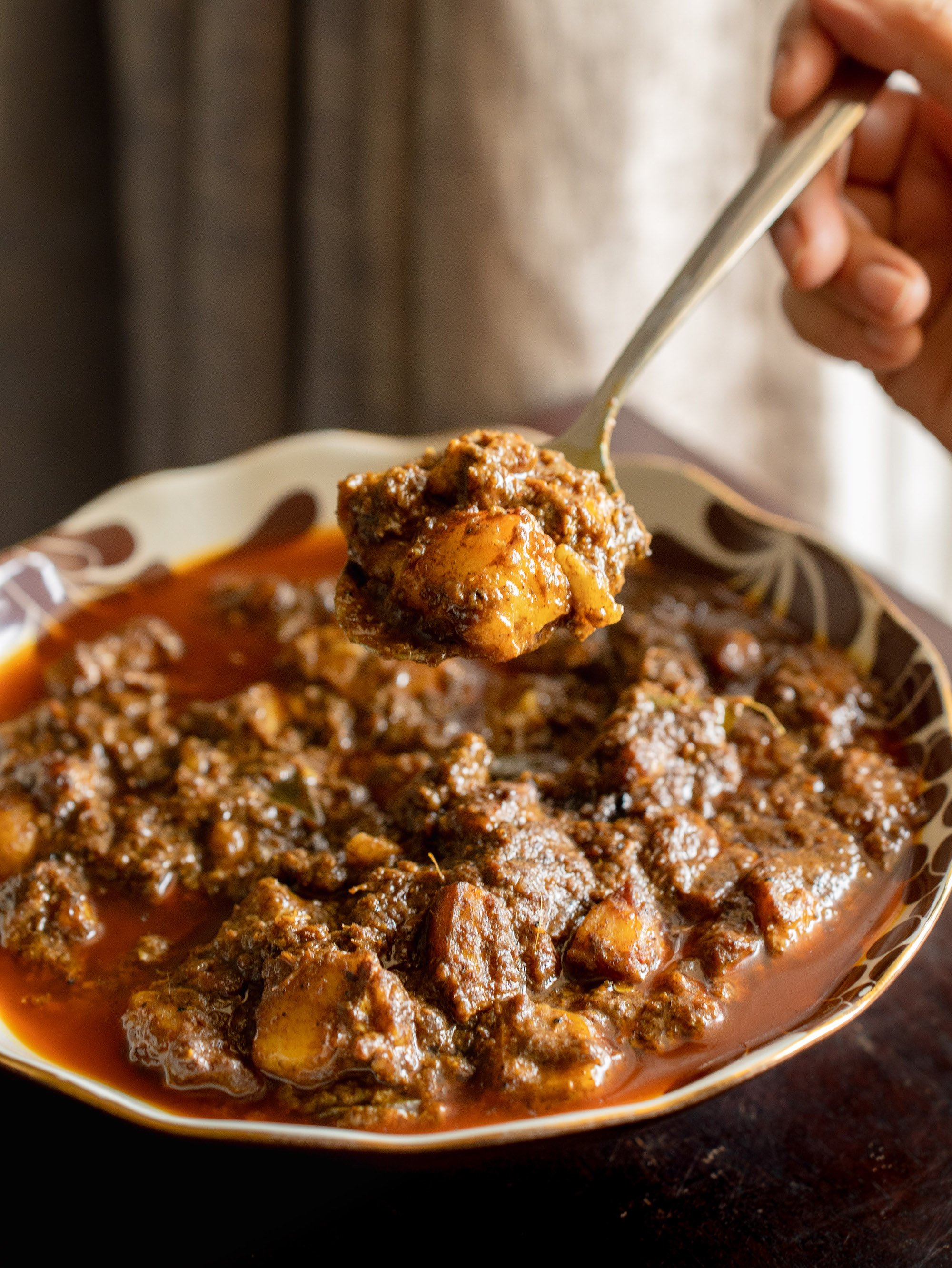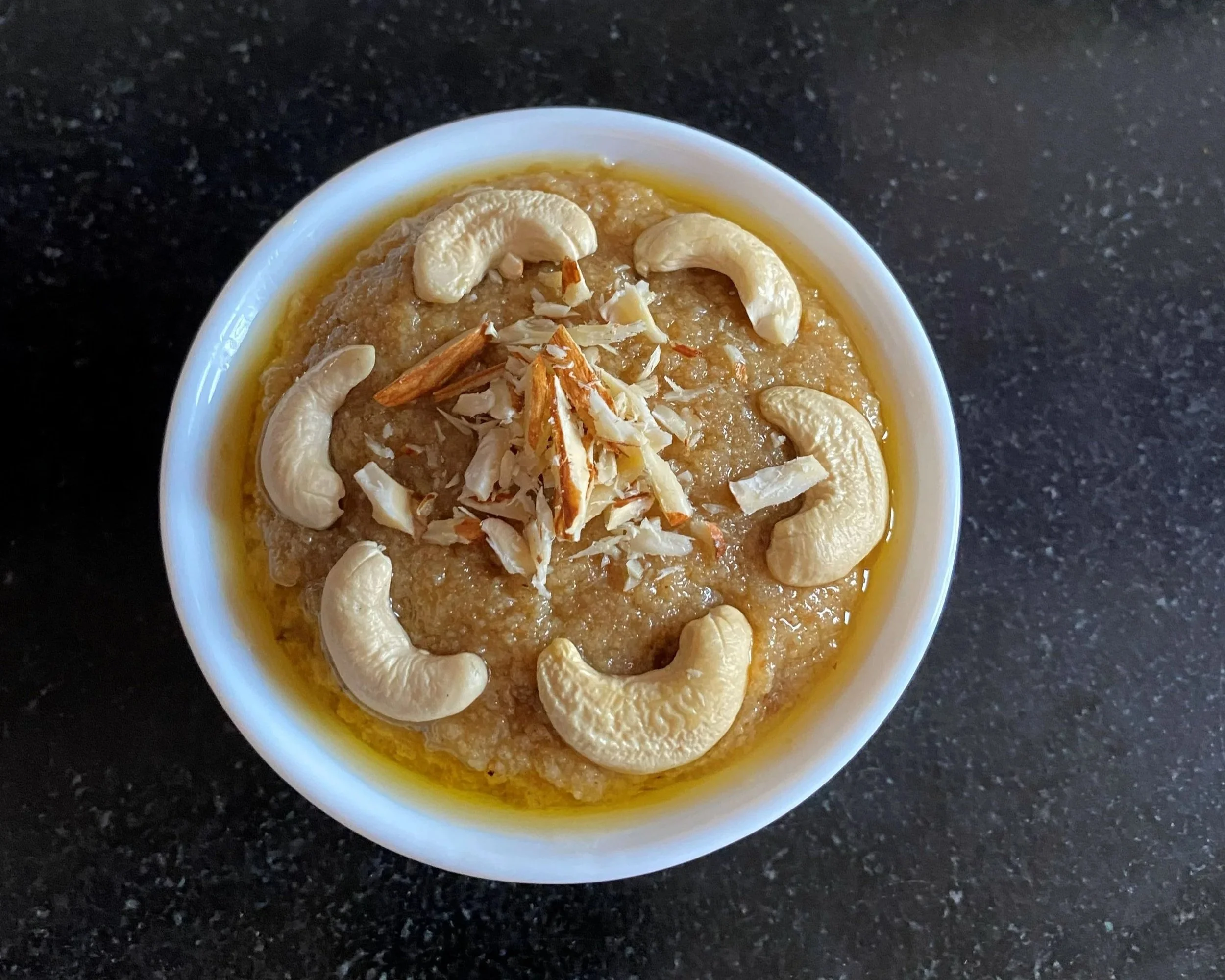Mapping Kodava Cuisine with Anjali Ganapathy

The 3rd in a collaboration between Masque Lab and Goya, we present Anjali Ganapathy, culinary curator and and chef, over a singular experience of Kodava cuisine.
#MASQUELABXGOYA is a series where we bring home chefs from around India to showcase their work and culinary heritage within the dialogue of food and culture. Anjali Ganapathy will be cooking at Masque Lab on April 29th & 30th You can book the experience through the links below.
“The Kodavas are people of farm and forest, where the border between the two, was until recently, notional or non-existent.”
— The Essential Kodava Cookbook
Anjali Ganapathy is a chef and curator of bespoke Kodava dining experiences. She spends her days in research, trailing women as they forage by the river, watching closely as they pound an assortment of herbs to make traditional medicine. She logs every detail, as they cook pandi, or prepare kachampulli, documenting the oral histories of food and life in Coorg.
“I want the plate to reflect our land and our people: how we started as paddy farmers and hunters; I want them to see the forest through the wild fruit and vegetables, the wild boar; to see the marine life and the river Cauvery that runs through our land in the mud crabs, the fish and the shrimp. To truly see the variety and depth of flavour present in our cuisine.”
Pandi curry, made traditionally with wild boar and kachampulli
Kodagu or Coorg, located on the eastern slopes of the Western Ghats, is one of the richest districts in Karnataka – its evergreen forests are home to a wealth of biodiversity in flora and fauna, habitati of the tiger, elephant, wild boar, sambar and flying squirrel. The Kodavas are a warrior clan, adept in the use of machetes, knives and guns. This knowledge of weaponry is used in protection and the hunting of game, but also in their traditions and rituals. Today, Coorg is most famous for its coffee plantations, but this is a fairly recent introduction, going only as far back as the colonial era. Traditionally, the Kodavas were paddy farmers, and rice features throughout the cuisine, elegantly reimagined each time, as mains, accompaniments, and dessert.
Tied to the Bounty of the Land
Like most farming communities, Kodava festivals, celebrations and their cuisine, are linked to the bounty of the land. One cannot exist without the other. The most well-known ingredient in Kodava cooking is kachampulli, also called Coorg black vinegar, a souring agent that adds a distinct sour, smoky flavour, and a dark colouring to the dish.
Growing up in a defence family, Anjali travelled extensively through small-town India, returning often to her roots in Bangalore and Coorg. And as with children who relocate often, Anjali learned to adapt — with early exposure to different landscapes, cuisines and traditions, she ate in keeping with the region and culture at each posting. It didn’t strike her until much later that almost no one seemed to know much about the Kodavas or their food. That stark absence of representation hit a nerve.
Kachampulli or Coorg black vinegar
Kachampulli lends a dark colour, and sour smoky flavour
Kadambuttus are steamed rice balls, paired here with pandi curry
Kachampulli & Pandi, Pork & Vinegar
Besides kachampulli, the most recognizable trait of a Kodava is their love of pork. In the early 90’s and naughts, before pork belly was on the menu of most upscale restaurants, there was significant stigma around the meat — labelled dirty, unclean, and associated with tapeworm. “As a kid, I’d hear the whispers, but it never fully registered as shame. Looking back now though, I realise that I would downplay it, in my own way. We’d always eat pork of course, but only in the safe space of home, amongst family and friends.”
Today, Anjali’s work consciously seeks to shed that baggage, reclaiming pork in the bold statement that is its name — Pig Out. “I didn’t want to hide or sugarcoat, or even soften it. Everyone is proud of their community; I’m no exception. But more than that, it was an approachable name, an extension of how we talk and who we are. We sit around the table, and we pig out!”
Tender bamboo shoot
Coorg green pepper
Anjali spends much of her time in Coorg, researching and documenting ingredients, techniques, and traditions. Part of her work then presents Kodava food through culinary experiences around the country, and at her family estate in Coorg. The most common reaction she faces is surprise — at the variety of food, the nuance and flavours present through their unique mix of spices, and the use of Kodava vinegar. Pork, the hero of every meal, is often presented in multiple iterations through various preparations. But unexpectedly, it is the wild fruit and vegetables that steal the spotlight. “My biggest thrill is watching a hardcore non-vegetarian diner convert. Very often they’ll ask me to skip serving them the vegetarian dishes: ‘Don’t give me the pumpkin, I’m not interested,’ they’ll say. But then, they’ll invariably have a taste from a friend’s plate, and then call me back to ask for a portion,” she laughs.
#MasqueLabxGoya ft Anjali
Being able to introduce her community, the landscape and culinary traditions in this way, starting conversations that allow people to look at food differently is at the heart of what drives her. “Food isn’t just what you eat,” she explains. “The real story lies in asking different questions: Why are you eating this? Where is it coming from? What time of year is it prepared, when is this ingredient available? How do we preserve it? And how does all this link back to a belief system?”
The Kodavas are a small community. “Only a hundred thousand of us — it gives me chills just to say it!” The vast majority of Kodava knowledge is passed down orally, through word of mouth, and remains formally undocumented. “We are losing so much — not just information, but stories and perspectives, with each passing generation. Why is kachampulli made by men? Why does pandi made by a man taste different than made by a woman? What is the herb that is given to farmers as they transplant crop during the first rain?”
Anjali’s upcoming pop-up at Masque Lab brings these questions to Mumbai, presenting the city a chance to understand Coorg through the lens of food. The menu is designed to introduce diners to the cuisine, but also to give them a view of the land, its community and culinary heritage. Expect pandi, of course, but also wild mangoes, smoked roast pork, wild mushrooms, tender bamboo shoot, akki ottis, kadambuttus and so much more.
In this edition of the #MasqueLabXGoya, the Lab is setting aside its tasting menu format, to honour the roots and traditions of Kodava cuisine: “We will begin with a few snacks, in the Kodava tradition, to pair with our cocktail menu, and then a thali-style meal, followed by dessert,” explains Varun, head chef at Masque. “I’m very pro-thali — we’ve been using a modern thalis at a few of our experiences recently, including for Dior here in Mumbai, and at Nahargarh Palace in Ranthambore.”
Varun, for whom this will be a first experience of Koadava cuisine, is looking forward to hosting Anjali at the Lab. “I’ve had very limited exposure to the cuisine of Coorg, so this is an experience I am excited for. I’m hoping to learn a lot working alongside Anjali.”
To make a reservation for Anjali’s #MASQUELABXGOYA dinner, use the links below:
Ingredients for sesame chutney — red chillies, coconut, tamarind, jaggery, salt and toasted white sesame
Words by Anisha Rachel Oommen, and photographs by Atul Pinheiro.
ALSO ON THE GOYA JOURNAL
















